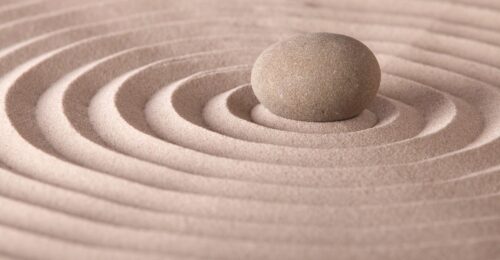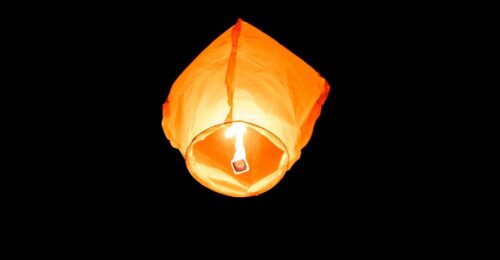What I've learned about work that has worked for me
Like so many women, only through trial and error am I learning to cultivate work/life balance. Doing so has required me to reorient my priorities from work/life to life/work. And, that has made all the difference.
One of the best pieces of advice I ever got was from a horse master. He told me to go slow to go fast.
(Viggo Mortensen)
Not long ago, during an exchange with a single mom juggling a demanding job while raising/homeschooling 2 young kids, I found myself offering her suggestions on how to establish more work/life balance to stave off seemingly eminent burnout. This made me reflect on my own work history, my own struggles with repetitive burnouts and how I slowly had to carve out a gentler path for myself over the past decade.
I realize there have been countless studies, articles and corporate lip service paid to helping workers, especially women, create more work-life balance. As is, I won’t insult your intelligence by rehashing some of the often-cited tips and tricks. (You can easily Google those yourself.) Rather, I want to take this opportunity to share with you how I had to (re)learn how to work (and live) so as to break my own imbalanced and unhealthy work/life pattern in order to lead a slower, but richer life.
My “binge/purge” work/life pattern
Driven by deep fear and an unquenchable need for survival, for much of my life, my work/life pattern was marked by manic activities followed by eminent burnouts and so on. Looking back, this pattern likely took hold during my school days. (Un)fortunately, it was easier to hide the adverse impact of burnouts thanks to scheduled breaks (e.g., Christmas, Spring break, summer break). Upon entering the workforce, scheduled breaks were a thing of the past or, at best, at one’s own discretion. Any meaningful break was self-determined and often restricted to 2-4 weeks of paid time off (PTO).
Given my disposition, I found it difficult to turn off work physically and mentally, especially when I was working in tech where the products, services and culture all lent themselves to an “always on” mentality. Within this “real world” context, I quickly found myself struggling to create work/life balance mainly because I had a hard time establishing boundaries for myself and, thus, for others. Consequently, my career was marked by short sprints of productivity (usually 1-2 years) followed by painful “crashes” (usually 6 months to 1 year) wherein I had to unplug from everything (usually through being out of the workforce) in order to recuperate. Rather than securing my survival, this work/life pattern was undermining it.
Turning Point
My negative work/life pattern, coupled with a number of other life events, created a perfect storm that finally forced me to reexamine and reordered my priorities. While at this crossroad, one of the stories that resonated and has stayed with me was about Japanese flower arrangers. To fill a large container, they would put in the largest rock first and then fill up the surrounding space with pebbles. What I extrapolated from this story was: do the hard stuff first. Then, fill in the remaining space with tasks. Slowly, I started to integrate this simple strategy into my work day.
My “typical” work day (now)
It’s been more than a decade since I took my first conscious step towards establishing a healthier work/life balance. Individually, those steps didn’t feel like much at the time. Collectively, they’ve been life-changing.
These days, I typically ease into my day by first meditating for 60-minutes and then taking a walk for 20 to 30-minutes. Only after being awake for about two hours do I go to my desk and begin work-work. Rather than immediately power up my laptop to check e-mails, I usually pull out a Post-it note pad (yup, low tech) and jot down the top 3 things (big rocks) that I need to get done for the day with the most difficult being first. For me, these rocks are usually client financial planning work, writing or reading. Two-four hours later, when I’m usually done with the big rocks or have realized that it’s best to table and revisit the remainder at a later time do I then check/respond to e-mails (usually for 1-2 hours).
By around 2PM or 3PM, I’m usually done with my most important, pressing work. To rejuvenate, I eat lunch and take another 30-minute walk or a 60-minute nap (sacrilege!). If my workload is on the heavy side, I’d clock in again in the evening (9PM – 11PM) to do more work…usually in preparation for the next day.
Lessons learned
Metaphorically speaking, my day is the container buffeted by unstructured time at the beginning and the end. Such “down time” are devoted to the seemingly mundane activities of life: meditating, walking, eating, napping, catching up with family/friends/neighbors, sleeping, etc. However, it’s my life (the container) that creates space for my work. Additionally, I’ve come to realize that, for me, work is best done within a limited (contained) space as this helps me prioritize and be more productive. In doing the hard stuff first, not only am I better able to match my physical and mental energy level to the work at hand, but am also able to walk away when the most important work is done so as to get back to life.
Conclusion
Work/life balance is a very personal decision. I share my experience not to hold it up as the “right” way and, thereby, subconsciously impose it on others, especially women whose circumstances may be quite different from my own. (For example, I don’t have children and so could never completely understand how consuming that responsibility can be.) Rather, I want to show the slippery slope that was inherently a part of my (and likely many others) effort to make a living. For me, work subsumed life and, thus, resulted in an imbalance marked by manic activities followed by burnouts. However, as I slowly reoriented my understanding from work/life to life/work, I was able to approach both with greater balance and, thus, sustainability. This has been a long journey, and in no way have I arrived. But, step by step, I’m walking down a decidedly different path that has allowed for life and work in equal measure and, thus, the opportunity to experience both with greater satisfaction and joy.
RECENT POSTS
March 2025
Although 2024 double-digit stock market return suggests a strong US economy, the recent change in government leadership and policies highlights the underlying risk (uncertainty) that now weighs down the market and tests American exceptionalism.
December 2024
The fifth anniversary of my advisory firm and the holiday season have prompted me to reflect on my Life’s journey so far and, in so doing, unexpectedly arrive at an unconventional perspective on gifting.
October 2024
August steep market decline serves as a useful dress rehearsal for how we might react in a bear market and what we should do now to increase survival.
Get a free financial education.
Learn more about key financial topics, such as investing, 401k, disability insurance, paying for a home, at your own convenience. Sign up for Women’s Wealth monthly newsletter and have relevant information delivered to your inbox.

Live life on your own terms.
Do you find yourself constantly stressed or bored at work and wondering when you can live life on your own terms? Learn how to harness money’s energy and begin to create your life rather than manage it.
CONNECT
Anh Thu Tran
Women’s Wealth LLC
P.O. Box 1522
Tacoma, WA 98401
anhthu@womenswealthllc.com
(206) 499-1330
Women’s Wealth LLC is a Washington State registered investment advisor. The presence of this website on the Internet shall not be directly or indirectly interpreted as a solicitation of investment advisory services to persons of another jurisdiction unless otherwise permitted by statute. Follow-up or individualized responses to consumers in a particular state by our firm in the rendering of personalized investment advice for compensation shall not be made without our first complying with jurisdiction requirements or pursuant an applicable state exemption. For information concerning the status or disciplinary history of a broker-dealer, investment advisor, or their representatives, a consumer should contact their state securities administrator.
© 2021 Women’s Wealth LLC. All rights reserved. | Design by Erin Morton Creative, LLC.



